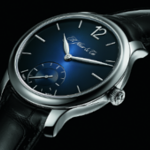
In October 2012, it looked like curtains for H. Moser & Cie. Launched with much fanfare in 2005, the brand quickly became a darling of watch collectors thanks to its original and innovative watches. Based in the Swiss town of Neuhausen, next to Schaffhausen and not far from the border with Germany, the brand is named for the 19th-century watch entrepreneur and industrialist Heinrich Moser. It had been revived by a group of investors that included Jürgen Lange, an engineer who had developed movements for the IWC brand, based in Schaffhausen, and Roger Nicholas Balsiger, the brand’s honorary chairman, who is the great-grandson of Heinrich Moser.

But Moser soon ran into trouble. Its watches turned out to be inordinately expensive to produce. Their movements were extremely complex and difficult to regulate. Some components required hours of manual labor and were manufactured to unnecessarily strict tolerances. The watches excited collectors and the brand soon had a long list of orders to fulfill, but deliveries lagged. Some customers found themselves waiting a year or more for their Mosers. Eventually, demand disappeared and Moser’s reputation soured. The problems continued: certain watches were recalled; prices on all of them were too low to make them profitable. The excitement that met its first watches in the mid-2000s had all but dried up. So, too, had its finances. By 2012, the brand needed new investors and a new plan or it would have to shutter its factory.

To the rescue came Swiss watch veteran Georges-Henri Meylan, the long-time CEO of Audemars Piguet. He had retired from AP in 2008, but retirement wasn’t his cup of tea, and he created a family-run holding company, MELB Holding – an acronym for “Meylan Edouard Léonore Bertrand,” the names of his three children. Meylan brought together experts and associates from his career in the watch world, including Bill Muirhead, former financial director of Breguet, who now serves as MELB’s CEO. In October 2012, MELB Holding purchased Moser, along with its sister company, the balance-spring maker Precision Engineering. Moser got a new lease on life. MELB’s goal is to acquire financially troubled watch brands and revive them. Earlier in 2012 it made its first purchase, Hautlence, a small, high-end brand based in La Chaux-de-Fonds. That year, Moser’s investors asked Meylan to audit their company and see how it could be turned around. Seeing potential in the brand, Meylan chose to acquire it. In April 2013, MELB appointed Edouard Meylan, Georges-Henri’s son, as CEO. The younger Meylan was trained as an engineer and is a co-founder of Celsius X VI II, which manufactures cellular phones with built-in mechanical watch movements. (His brother, Bertrand Meylan, runs MELB Asia, the group’s distribution company for Greater China.)

The challenges MELB faces with Moser are imposing: how can the company keep producing the watches that impressed collectors, but better, and without losing money? In December, WatchTime visited Moser’s headquarters in Neuhausen to learn about the Meylans’ plans.

Those plans started with lowering Moser’s crippling production costs. Edouard Meylan and his team examined the collection movement by movement, looking for ways to improve the manufacturing process. They widened tolerances for some components, where doing so would not affect the movement’s performance, and made alterations to the design of others so that they could be more easily machined and require less hand tooling. For Meylan, increasing efficiency was often about homing in on small details, like the number of different screws used in a particular movement. “For our simplest movement today we use about 14 different types of screws,” he says, “but at Baselworld we’re launching a new version of it with just two different types.” The time a watchmaker saves when he has just two boxes of screws to choose from will make a real difference as the company increases its production, Meylan says. Moser currently produces around 1,000 watches a year, and intends to reach 3,000 by 2017. Another way that Moser plans to cut costs is by scaling back some of its most ambitious innovations. For several years the brand had employed its patented Straumann double hairsprings. (They’re named after Reinhard Straumann, inventor of the Nivarox alloy. Thomas Straumann, his grandson, is a minority investor in Moser.) In a Straumann double hairspring, the escapement stacks two identical springs wound in opposite directions so that their inconsistencies counteract one another, providing an internal regulation not unlike that of a tourbillon. Moser introduced the double hairspring in 2009 in a model called the Henry, and later produced double-hairspring versions of several other watches. But constructing and regulating the springs is enormously expensive; they cost about as much to make as a tourbillon, Meylan says, and need to be priced accordingly. Moser has discontinued the Henry model and will use the double hairspring only for special pieces.
Similarly, the brand is cutting back on its use of the interchangeable escapement, which was much ballyhooed when Moser unveiled it in 2005. A separate plate for the escapement is fixed to the mainplate with screws and can be easily removed and replaced. The interchangeable escapement was intended to make after-sales service easier, but it slowed down production and raised costs (a movement with one of these escapements costs 10 times as much to make as a standard ETA caliber). The brand has now scaled back its use to its higher-end watches. The process of analyzing and streamlining production techniques is still going on, Meylan says. “Eventually, we’ll get the movements that allow us to generate the proper margins we need to survive.”

At the same time, Meylan has examined the other side of the profitability equation: prices. They simply weren’t high enough, given the brand’s very limited production and high costs. He has raised them 15 to 20 percent. They now range from $18,300 to $78,000, with special editions at about $120,000. With higher prices, lower manufacturing costs, and increased production, Moser intends to break even by 2016. Moser has also brought more of its production in house. Until last year, a portion of its manufacturing was done in a factory in Schramberg, Germany. Operations performed there have now been transferred to the Neuhausen facility. Meylan says that MELB may one day acquire other factories to produce gears and other components not now made in house. The Neuhausen facility also houses Precision Engineering. Precision, whose managing director reports to Edouard Meylan, makes about 50,000 assortments a year, supplying not just Moser and Hautlence, but a variety of other brands, from large-scale companies wanting an alternative to the Swatch Group’s Nivarox to small independents like Kari Voutilainen. Thanks to the Meylans’ many watch-industry contacts, MELB has helped Precision expand its network of customers.

Moser started to overhaul the production process by focusing on its best known models. These include the Perpetual 1, the watch that put Moser on the watch connoisseur’s map when it was unveiled in 2005 and is the brand’s most popular model. Meylan says that the company found 70 ways to improve the movement-manufacturing process. A Perpetual 1 used to take a watchmaker 90 hours to assemble. It now takes just 25 to 35 hours.

Designed in cooperation with the independent watchmaker Andreas Strehler, the Perpetual 1 generated buzz among collectors because of its technical innovations, which resulted in an extremely simple, easy-to-read-and-set calendar display. The watch has a big date at 3 o’clock and a power-reserve display at 9. Its most notable dial feature is a very short arrow-shaped hand mounted at the center. This hand tells the month, by pointing to the equivalent hour index (5 o’clock for May, 9 o’clock for September, etc.). The brand claims that this is the first watch to employ this kind of month display. The watch can be set by turning the crown either forward or back without damaging the movement. The leap year setting is controlled by a recessed button at 9 o’clock, and you can tell where it is in the four-year cycle via the “leap year star” visible through the caseback. Another notable feature is the so-called “flash” calendar, which Moser also employs on its Monard Big Date watch.
Beneath the dial are two layered calendar disks. The lower one shows numbers 16 to 31; the top one shows 1 to 15, and also has a window through which you can see a number from the bottom disk. By layering these disks and controlling how the display shifts between the higher and lower disks, the watch is able to switch immediately at the stroke of midnight between dates, and without ever having to display 29, 30, or 31 in a month that doesn’t have those dates. The watch has a seven- to 10-day power reserve thanks to a double-barreled mainspring. The Perpetual 1 comes in a case of white or rose gold or platinum; all are 40.8 mm in diameter and 11.05 mm thick. It costs $60,000 in gold and $78,000 in platinum.
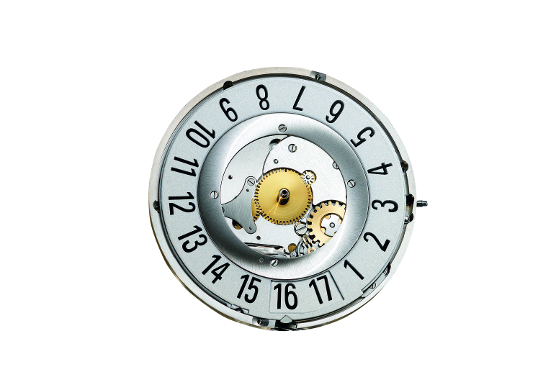
Last year, Meylan also focused on making improvements to the Nomad Dual Time ($36,500), a two-time-zone automatic. It was Moser’s only entirely new model at Baselworld in 2013: Meylan’s team chose to redesign the automatic movement in the now-defunct Meridian watch and use it in the Nomad. Some changes are visible on the dial: a 12/24-hour indicator that was easily confused with a big date has now been replaced by an a.m./p.m. indicator for the home time zone, showing white before noon and black from noon to midnight. The Nomad employs a click system for winding, similar to a Pellaton winding system, used by IWC, or Seiko’s “magic lever.” Moser’s engineers did a dynamic simulation of the spring and adjusted its design. Meylan says this was the most difficult piece of the movement to master.

Moser produces six movements, used in six models. They’re led by the HMC 341, contained in the Perpetual 1, and the HMC 321, used in the Mayu Small Seconds. The others are the HMC 342, in the Monard Big Date; the 343, in the Monard Center Seconds; the 346, in the Nomad; and the 348, used in the Perpetual Moon. All have a frequency of 18,000 vph and all but the 346 are manual-wind movements. Effective at Baselworld this year, Moser is grouping all six models into a single collection called Endeavor and renaming them. The Perpetual 1 will become the Endeavor Perpetual, the Nomad Dual Time will be the Endeavor Dual Time, etc. Moser will also introduce its second collection, called Venturer, which will have a retro-style case. (No further details were available at press time.) Meylan says all new models will remain true to Moser’s defining characteristics: a long power reserve (the shortest is three days and most models have seven days of power), double côtes de Genève decorations and the Moser hallmark on the movement, an arched balance bridge (Moser calls it a “moustache”), screwed gold mounts, a slow-beat balance, and, on the models with dark dials, a so-called “fumé” effect, with a slight gradation from lighter to denser color saturation (“fumé” is French for “smoked”).

In the meantime, MELB’s other watch brand, Hautlence, has also undergone some changes. The brand was founded in 2004 by Renaud de Retz and Guillaume Tetu, the brand’s CEO. The company has designed all its own watches and calibers, the components for which are made chiefly by outside contractors. Like Moser, Hautlence had fallen on hard times. It broke even in 2008, but was then hobbled by the financial crisis. In 2013 Hautlence produced 220 pieces, and it has budgeted an increase in production to 450 for 2014. The brand expects to be profitable by next year.

Hautlence has three collections: Origine, Avant-Garde, and Concepts d’Exception. All feature unconventional dials: most of its watches have jumping hours and retrograde minutes displays. One recent example is the HLRQ 01. Powered by the Hautlence-designed HLQ caliber, the manual-winding watch has a jumping hour on the left and a retrograde minutes dial on the right, as well as a date window at 6 o’clock. Through the dial’s overlapping displays you can see part of the movement. Also characteristic of Hautlence, the case combines different materials, with DLC-coated titanium and a rose-gold bezel. Hautlence’s watches are priced higher than Moser’s: the HLRQ 01 costs $46,000, and the collections as a whole range from $21,400 to about $250,000. Collaboration between Moser and Hautlence is part of MELB’s plan for growth, and will allow the brands to achieve economies of scale. Plans are in the works for a Moser-produced automatic caliber that could be modified and used in new Hautlence watches. Whether or when MELB will add more brands remains to be seen. The company has said publicly that it will. Standing in the Moser conference room, in front of a table covered with re-engineered, and, he hopes, now-profitable Moser watches, Meylan points out that it might be a while: the company has its hands full now. “It’s a lot of work at the moment,” he says with a laugh.
This article first appeared in the June 2014 issue of WatchTime Magazine.

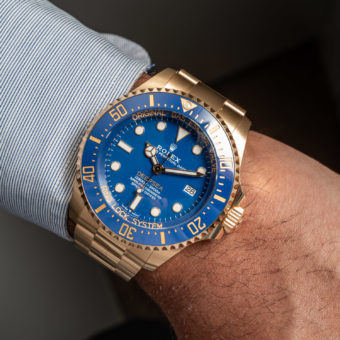
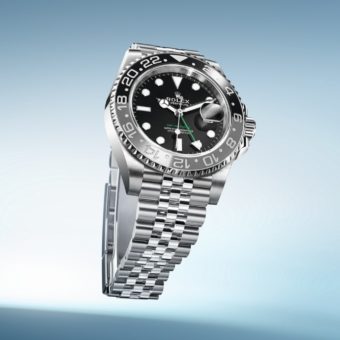
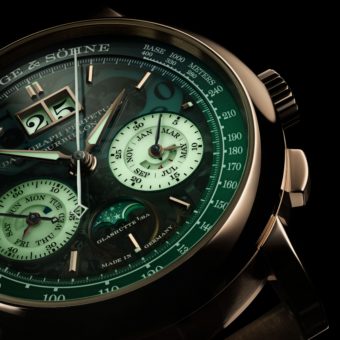
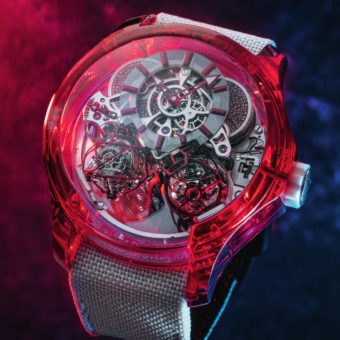
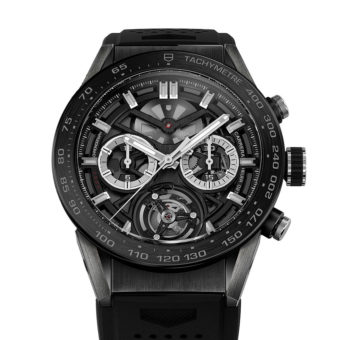

Great article.
Luv this sort of insight.